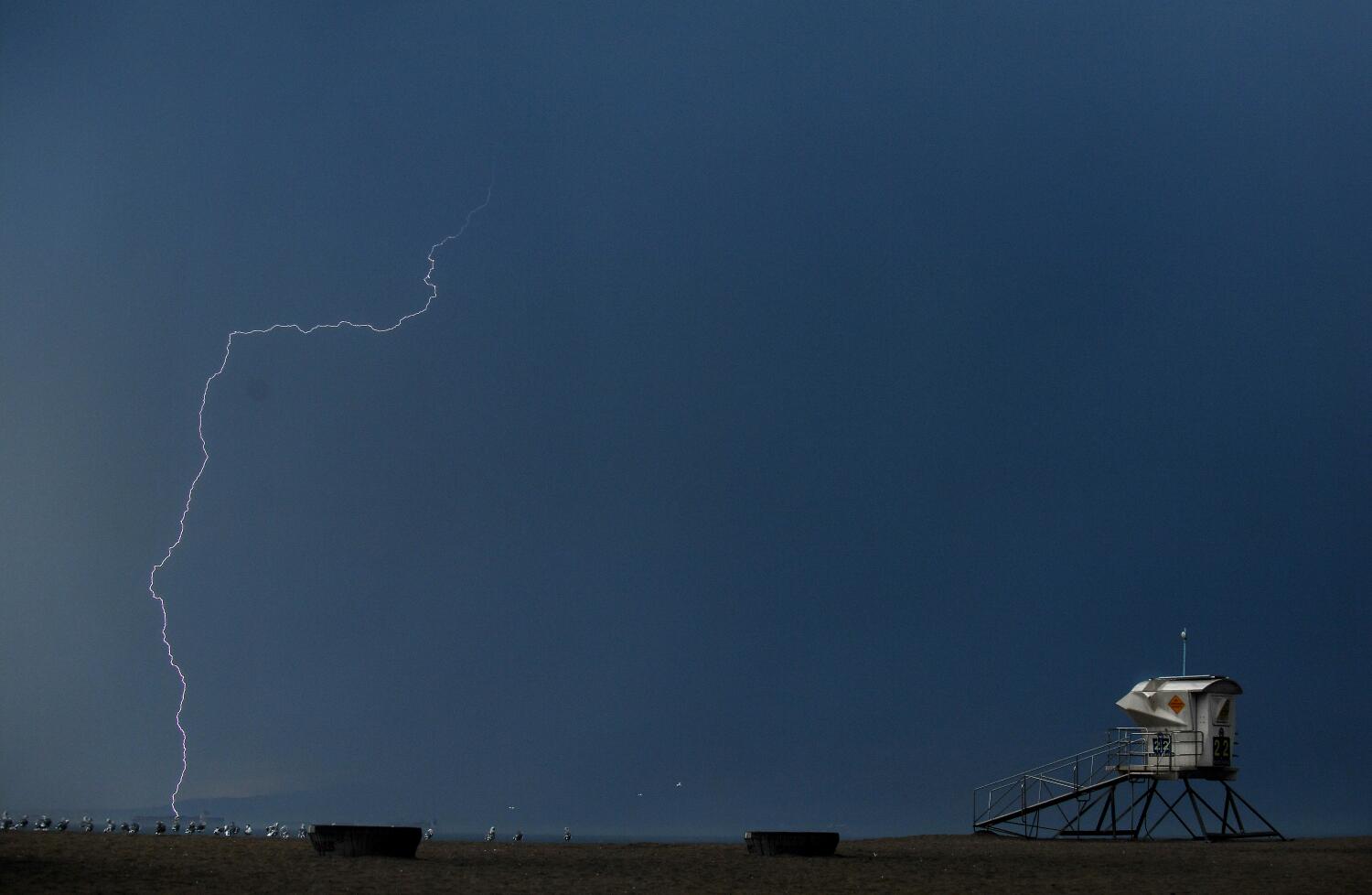-
Could Mets’ $150 Million Slugger Pete Alonso Betray New York For Mariners? - 9 mins ago
-
Kay Granger’s Senior Living Revelation Draws Fresh Scrutiny to Aging Congress - 31 mins ago
-
How to Watch Pacers vs Warriors, Live Stream NBA, TV Channel - 44 mins ago
-
Governor helps secure $250 million to help fix the Tijuana River sewage crisis - about 1 hour ago
-
‘Rust’ Prosecutor Withdraws Appeal of Alec Baldwin Case - about 1 hour ago
-
Rudy Giuliani Hawks Rudy Coffee While Dressed as Santa Amid Legal Woes - about 1 hour ago
-
Trial of former D.A. advisor on hold after appeals court steps in - 2 hours ago
-
Scott McLaughlin Addresses Reunion With Former Rival For 2025 24 Hours Of Daytona - 2 hours ago
-
National Security Committee Forgoes Decision on U.S. Steel Acquisition - 2 hours ago
-
Matt Gaetz Ethics Report: What’s Next for Former Lawmaker - 2 hours ago
Thunderstorms hit SoCal with rare spate of lightning Monday

Coastal Southern California, which rarely sees lightning, witnessed several hundred bolts Monday from a string of unusual thunderstorms — a display not to be overshadowed by the day’s other overhead spectacle, the SpaceX rocket launch.
Orange and San Diego counties’ coasts and valleys in particular experienced frequent bursts of lightning Monday afternoon, along with hail and loud thunder, as a low pressure system moved in from the east, creating instability in the atmosphere that fueled the unusually strong thunderstorms. Isolated storms, also with significant lightning, were recorded in Los Angeles County and the Inland Empire.
“They were more intense than your normal thunderstorms, for sure,” said Alex Tardy, a National Weather Service meteorologist in San Diego. “They didn’t have a lot of rain, but they certainly had a lot of lightning and a lot of ice, or hail. … The lightning and the hail [were] the dominant feature in these storms.”
The storms hit the San Diego area first, primarily between 1 and 3 p.m., then moved across Orange County through 6 p.m., Tardy said, as the low pressure system tracked most directly over those areas.
Very active day yesterday with showers and thunderstorms, here are the lightning plots (orange cloud to ground), the total rainfall reported at private and public automated weather stations #cawx #socal pic.twitter.com/QDkgjg7YXX
— NWS San Diego (@NWSSanDiego) March 19, 2024
Some residents reported hearing “constant” thunder and shared photos of some of the lightning and small hail on social media.
Tardy estimated that several hundred to a couple thousand lightning discharges happened in the atmosphere over Southern California on Monday, though the majority — about 80% — remained in the clouds. About 120 strikes hit the ground, he said, based off initial analyses from ground-based instruments that record and track lightning.
Because the lightning was occurring over more populated areas, he said many residents likely heard a lot of thunder and saw some hail. All lightning is accompanied by thunder and hail, though the hail doesn’t usually reach the ground and sound travels slower than light, so it’s not always heard. But the strength of the storms and frequency of the lightning made those two phenomena more prevalent Monday, Tardy said.
Lightning in Southern California remains rare, Tardy said, typically accompanying only a few winter storms and primarily occurring in July and August over the mountains and deserts. He said it’s rare year-round along the coasts and valleys, which makes it hard to compare Monday’s lightning to prior storms.
“It’s very unusual for the coast to have such widespread lightning,” Tardy said. “We had some on Friday too and that was unusual.”
That instability on Friday, which dumped snow on the Southern California mountains and created some isolated thunderstorms, came from the same low pressure system that brought storms Monday. The system has lingered and shifted along the California-Arizona border for days, Tardy said, but it’s expected move out of the area by early Wednesday.
There’s a small chance for more thunderstorms Tuesday afternoon, but the concern is significantly less widespread and focused on the mountains.
Lightning — which is hard to predict — is a concern only when it touches the ground, when it can have disastrous outcomes: setting vegetation or homes ablaze, interrupting power and even killing people.
“I don’t know of anyone being injured or any wildfires right now,” Tardy said Tuesday, though he noted that reports can come in days after a weather event.
But Southern California isn’t out of the woods when it comes to storms. Another large system is expected to take aim at the area this weekend, this one coming down from the eastern Pacific off the coast of Oregon, weather officials said.
It could bring more precipitation to the region Saturday and Sunday, but any rainfall is expected to be minor.
“It will be light if there is anything this weekend,” said Kristan Lund, a National Weather Service meteorologist in Oxnard. “If anything does fall, the majority of the area will get under a tenth of an inch.”
Source link




















